If you love lychees, you will love this lychee jelly. Set in a pretty bundt tin, this refreshing jelly requires only 5 simple ingredients, is quick and easy to make, and makes a very pretty jelly cake.
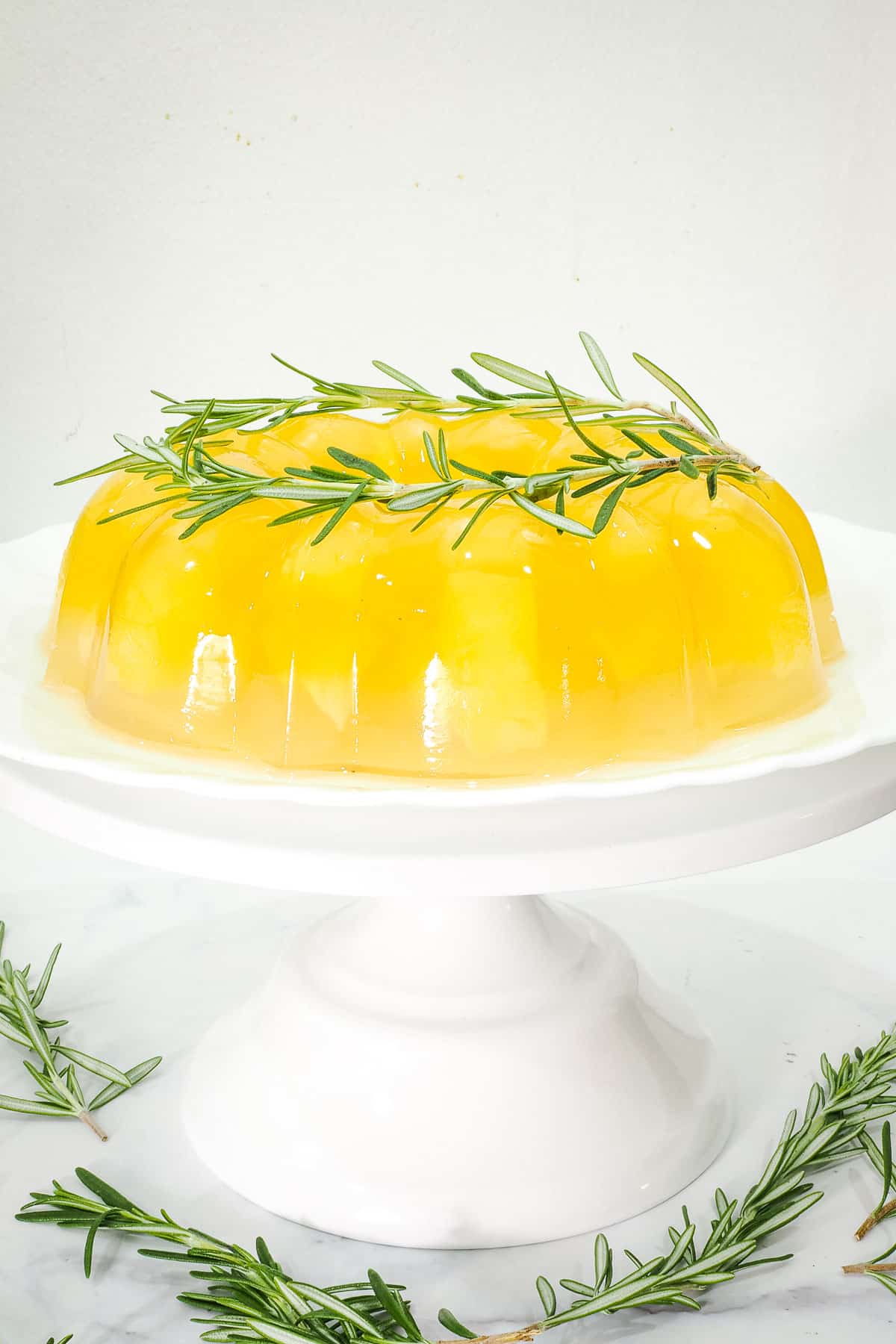
This easy fruit jelly recipe is made using canned fruits and konnyaku jelly powder. Konnyaku jelly is the Japanese term for a plant-based jelly from the plant Konjac. You can read all about it here on Wikipedia. It is often used in a similar way as the agar jelly, but the texture of konnyaku jelly is a lot chewier.
If you like this jelly, you should also check out this nata de coco jelly and this fruit jelly cake. They make great jelly cakes too. And for more jelly recipes, you should also check out this basic agar agar jelly recipe, pandan jelly, coconut jelly, butterfly pea jelly and mango jelly made using agar agar powder.
Jump to:
❤️Why You Will Love This Recipe
- This is an easy jelly recipe.
- It is not only delicious, but very pretty too.
- It is great to be served at parties and special occasions.
- The jelly is of a plant origin and is absolutely vegan. It makes a great dessert choice for both vegetarians and vegans.
❓What is Lychee?
Lychees are tropical fruits commonly found in the Southeast Asia region. The fruits are small and round, almost the size of strawberries. These fruits have a thin, red and coarse skin that needs to be peeled to enjoy the juicy white flesh on the inside. At the core of each fruit is a long, brown seed that is discarded.
Lychees have a sweet and slightly citrus taste. These juicy fruits are great to be enjoyed fresh and are also often used to make various Asian desserts and delicious drinks.
You can make lychee lemonade by mixing lychee syrup and lemon juice or lychee tea by mixing lychee flavored syrup into black tea, green tea or jasmine tea. Served chilled, both drinks are perfect for hot summer days. Lychee is also a great flavor for ice creams like in this lychee ice cream.
📋Ingredients
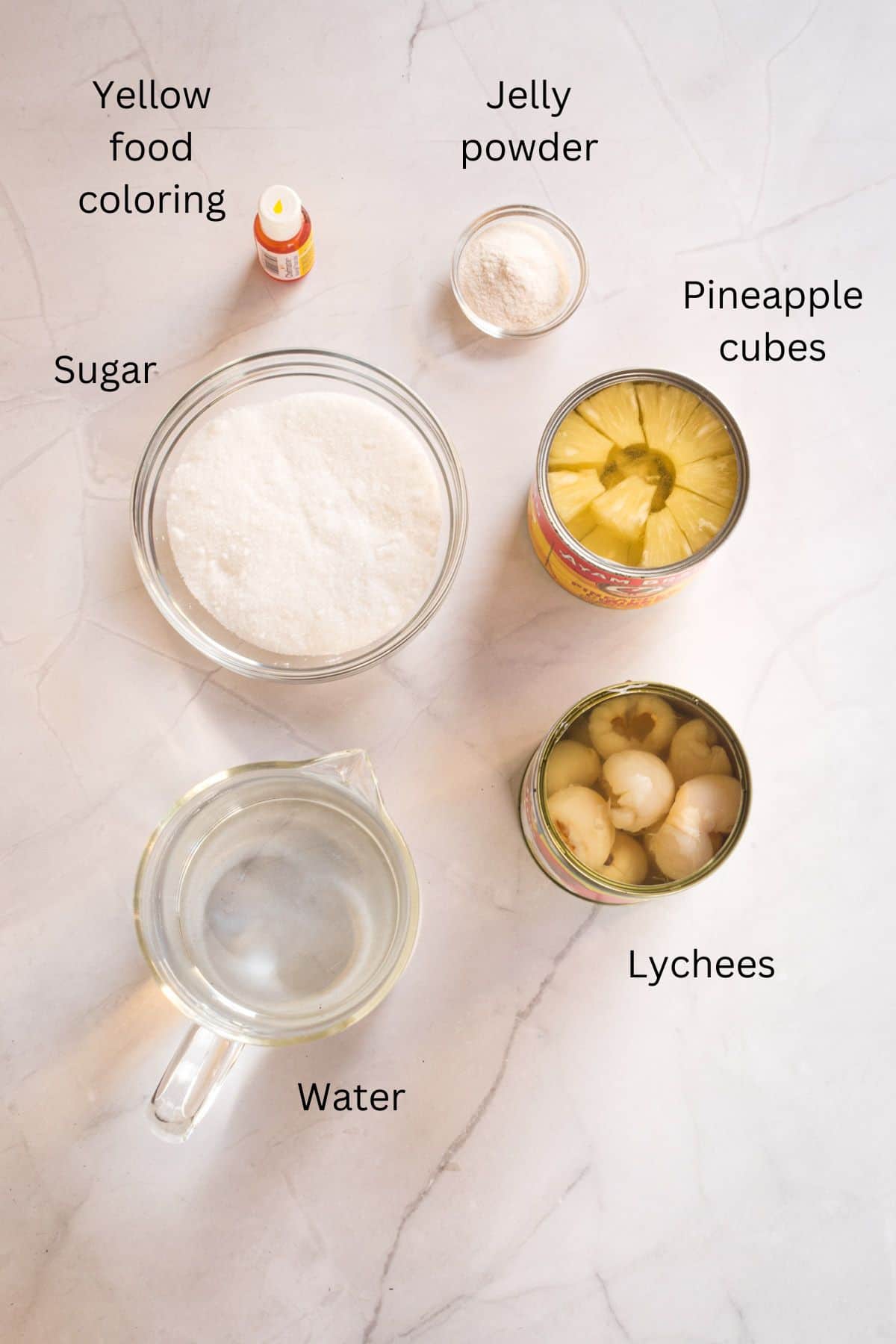
- Konnyaku jelly powder - also known as Japanese jelly, you can find these sold in powder form in small packets. Choose clear, unsweetened and unflavored jelly.
- Canned lychees (with the syrup) - I prefer to use canned lychees as the taste of the fruits is more consistent and the lychee infused syrup adds more flavor to the jelly.
- Canned pineapple (cubed) -similar to the lychees, canned pineapple are more consistent in taste. Use cubed pineapple. If using ring pineapple, cut the rings into cubes.
- White sugar - both coarse sugar or granulated sugar will work for this jelly recipe. Avoid colored sugar like brown sugar to preserve the color of the jelly.
- Water - use filtered water.
- Yellow food color (optional) - this is optional and can be left out if preferred.
- Rosemary leaves for garnish (optional)
*Refer to the recipe card below for full list of ingredients and exact quantities. For best results, use a digital kitchen scale where applicable*
🧾Substitution and Variations
- Konnyaku jelly powder can be substituted with agar agar powder. Use the exact same quantity as indicated in the recipe.
- Canned fruits can be replaced with fresh lychee fruits and fresh pineapples. Replace the canned syrup with water and increase the sugar in the recipe to 250g. If your jelly package comes with instructions on the amount of water to use, it is best to follow the instructions on the package. Mine indicated 950ml hence the total liquid (lychee sugar syrup + water) I used in making the jelly is 950ml.
- This easy jelly recipe can also be made into lychee jelly cups for easy individual serving sized lychee jellies.
This recipe has not been tested with other substitutions or variations. If you do try, please let me know in the comments section below!
👩🍳How to Make
Step 1: Prepare the mold. The first step in making this lychee jelly is to prepare the mold. This is because the jelly will start to set as it cools down, so it is important that the mold is ready to pour the jelly solution into.
I used a Nordic Ware bundt cake tin to make this pineapple lychee jelly, but you can also use smaller jelly cups to turn this jelly cake into lychee jelly cups.
Step 2: Cook the jelly.
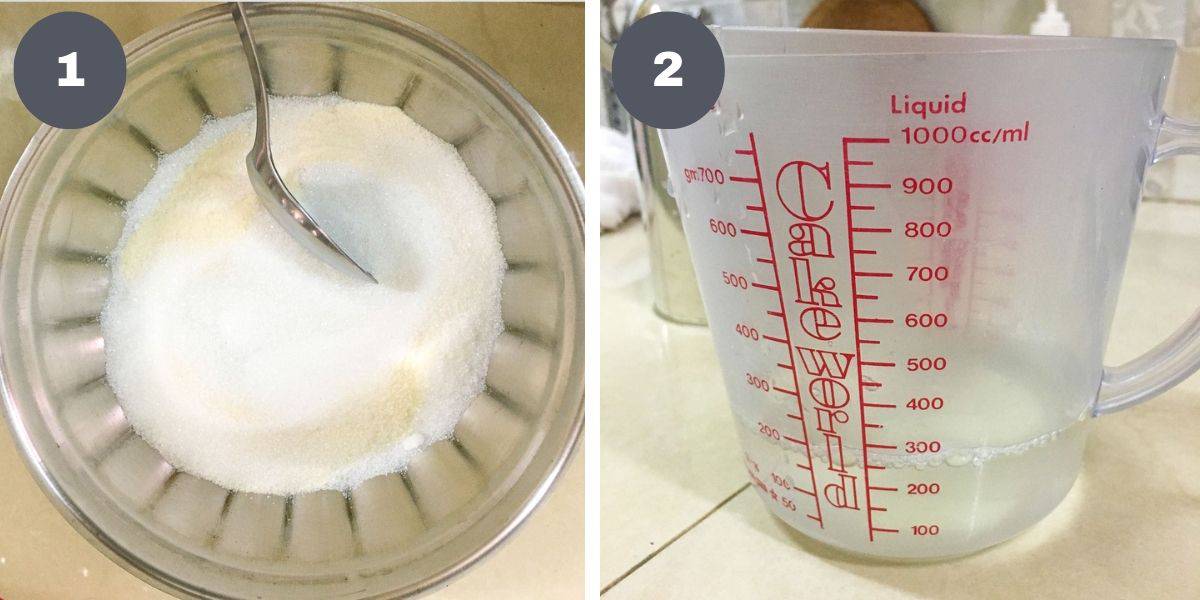
Start by mixing the jelly powder with sugar. Combine well (image 1).
Note: Mixing the sugar and the jelly powder before adding to the liquid helps the jelly powder to spread out, and this will avoid it from forming clumps when added into any liquid.
Separate the canned pineapple cubes from the syrup. Discard the syrup. Leave the fruits aside. Next, separate the canned lychees from the syrup. Pour the syrup (lychee juice) into a measuring cup (image 2).
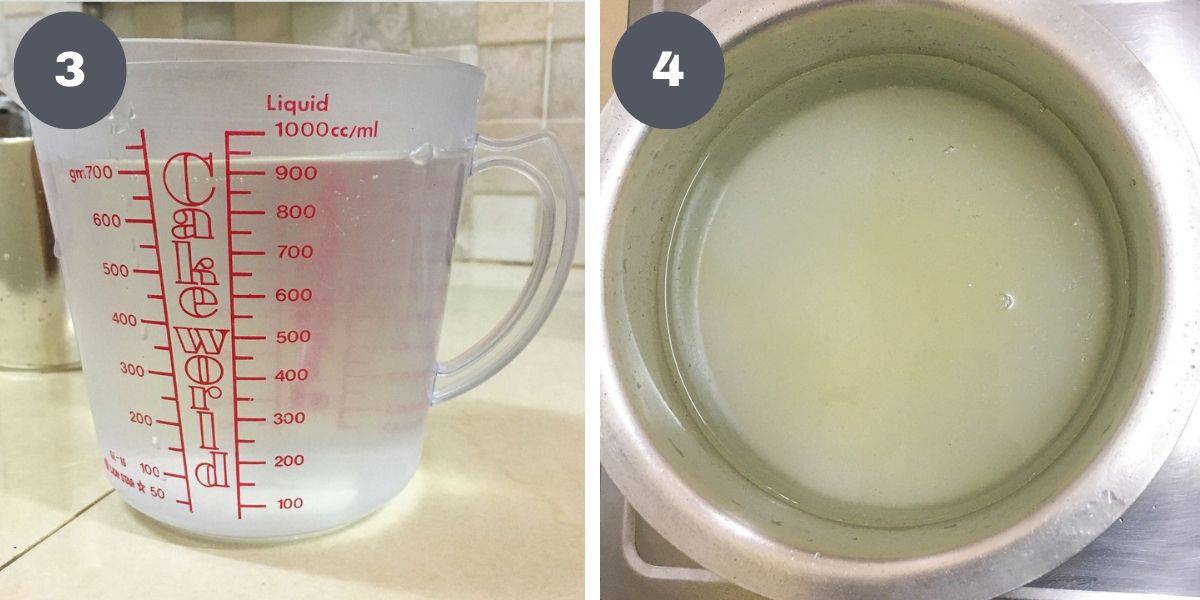
Add water to the lychee syrup until it reaches 950ml (image 3).
Note: Refer to the back of your jelly powder packet to determine the amount of liquid to use to make the jelly. If there is none, use 950ml for 10g of jelly powder.
Pour the liquid into a pot. Add the combined sugar and konnyaku powder into the pot. Stir to disperse the sugar and jelly powder (image 4). Turn on the flame to a low heat and continue to stir the jelly until the sugar dissolves. Increase the flame to medium heat and let the jelly solution cook to a rolling boil point. Turn off the heat.
Step 3: Assemble the jelly.
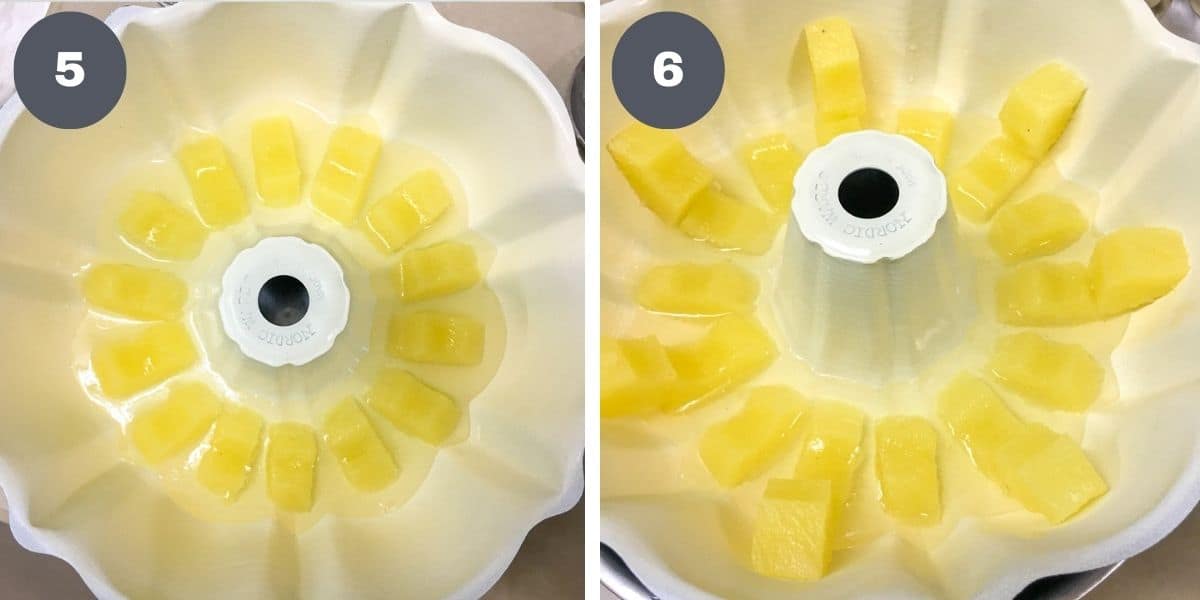
Arrange a layer of pineapple cubes at the bottom of the mold. Scoop the jelly solution with a ladle and gently pour it onto the arranged fruit. Fill the mold until the fruits are almost two-thirds submerged in the first layer of jelly (image 5).
Note: The reason for not submerging the fruits completely is to make sure they are able to connect to the next layer of jelly. If there is nothing to connect the layers, the layers will separate as you remove the jelly from the mold and when you cut it.
Let the jelly set (test by touching it lightly, if it is firm to the touch, it is ready) and arrange another layer of the fruit cubes on it (image 6).
Note: If you want the jelly set quicker, place the mold in a larger baking dish or bowl of cold water.
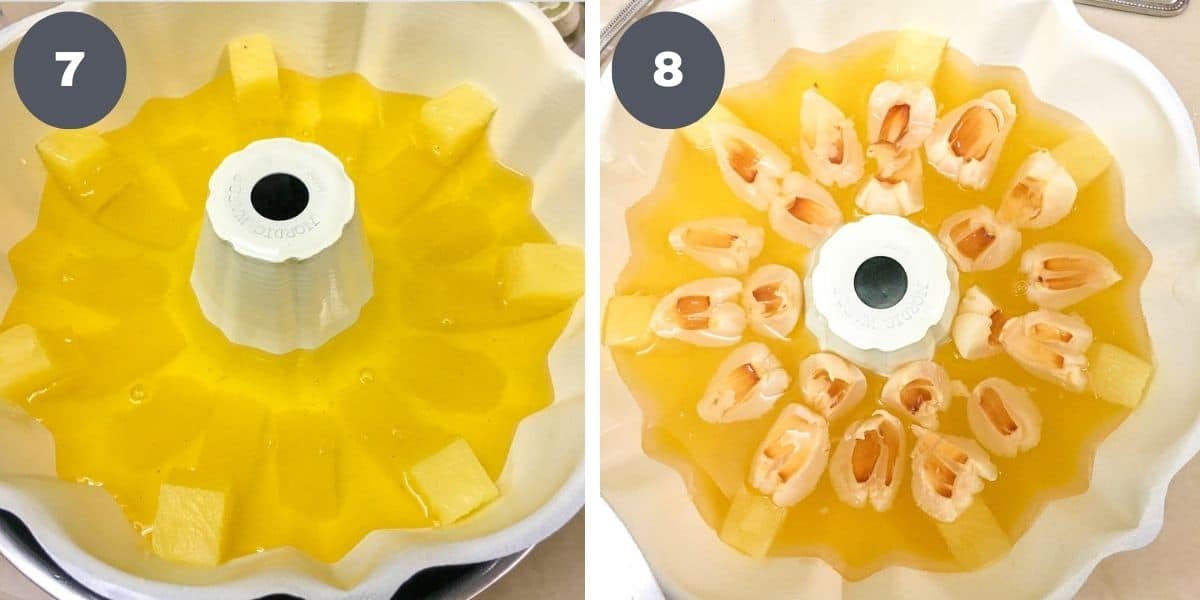
Add some yellow food color into the remaining jelly solution in the pot. Fill the mold until the second layer of pineapple cubes submerge halfway (image 7). Use a ladle to spoon the jelly gently into the tin to avoid causing a hole in the jelly layer underneath. Let the jelly set.
Once the jelly is set, arrange the lychee fruits onto the jelly (image 8).
Spoon all the remaining jelly solution into the tin. The lychees should be completely covered in jelly.
Step 4: Unmold the jelly and serve. Let the jelly chill and set completely before unmolding. Use a jam knife or a plastic spatula to gently loosen the sides without poking the knife in too much or cutting the sides of the jelly.
Turn it out onto a serving plate, shaking or tapping the tin lightly to allow the jelly to loosen out. Garnish with rosemary leaves or the remaining fruits if you wish.
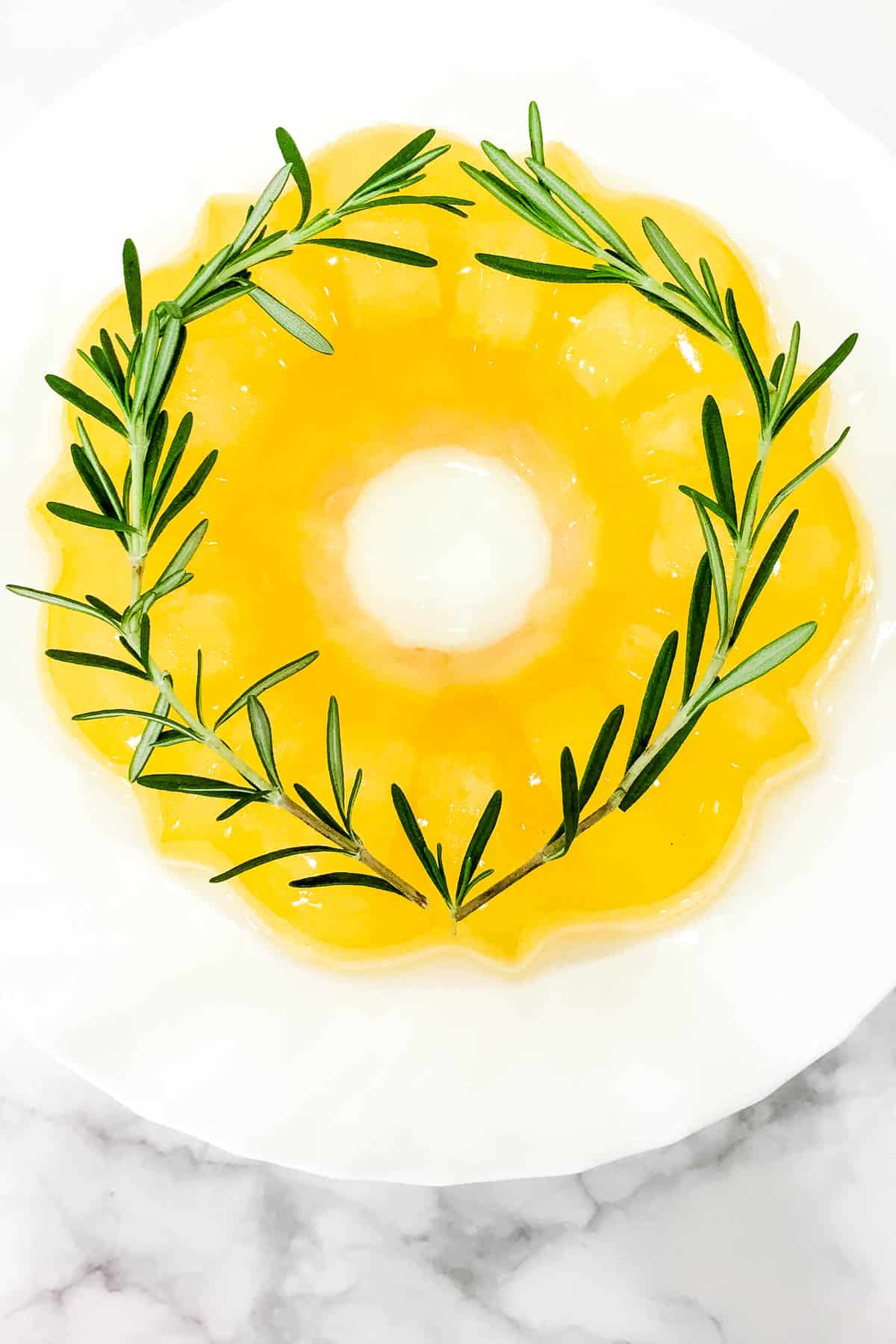
💡Expert Tips
- When making jellies, it is always a good idea to prepare the molds first as the jelly will set as it cools down and must be poured into molds immediately after cooking. Wash and pat them dry. There is no need to line them.
- Mixing the jelly powder with sugar before adding into the water helps avoid the jelly powder from becoming clumpy in the water. Mixing with sugar helps to disperse the powder and there will not be any clumps.
- Before cooking the jelly, mix the sugar and jelly powder in the liquid and stir to combine before turning on the heat. Add the jelly powder into hot water will also lead to the powder clumping.
- When cooking the jelly, it is important that the jelly powder is fully dissolved. Otherwise the jelly will not set well. Cook the jelly solution until it reaches a rolling boil point.
- When unmolding, if the jelly does not release from the mold, insert a few toothpicks between the jelly and the mold to create air pockets before turning the jelly over (see how I did it with this fruit jelly cake). The jelly should release easily from the mold.
- Konnyaku jelly or Japanese jelly is of a chewy texture as compared to normal agar-agar jelly. Because of this, is it harder to cut and chew. Hence, when serving children and old people (who are unable to chew the jelly well), it is advisable to cut the jelly into small pieces to avoid the risk of them swallowing it in large pieces. It is also advisable to cut the lychee fruits into smaller segments.
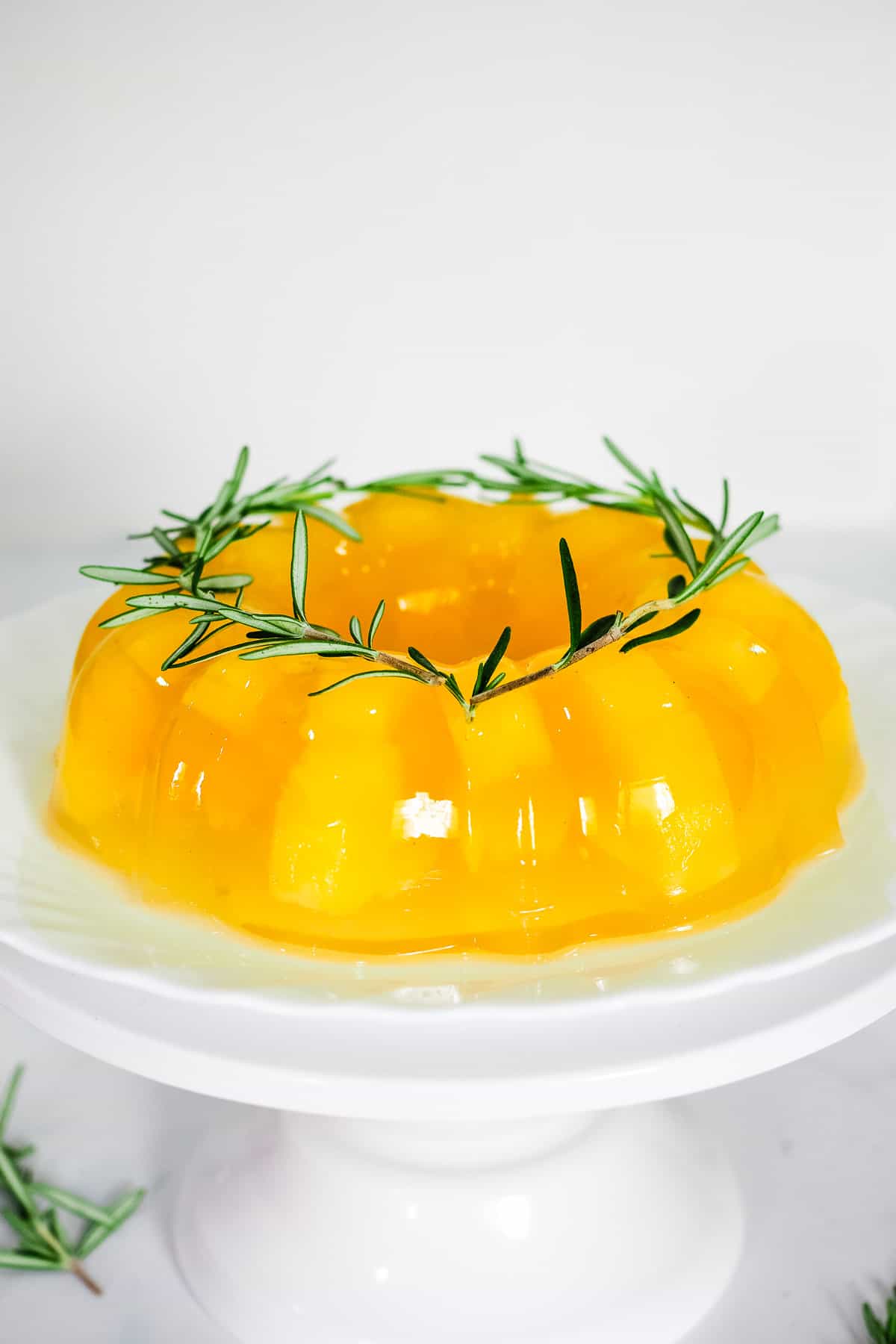
💭FAQs
Jelly molds do not require any lining. Simply pour the liquid jelly solution into the mold and allow it time to set.
Silicone molds are easier to work with for jellies as they can be twisted and pushed to get the jellies out. Metal molds tend to be harder, but you can use a jam knife, a thin spatula or even toothpicks to loosen the jellies from the molds before tapping them out.
This would depend on the mold into which the lychee jelly is poured. Smaller, shallower molds would tend to set faster as compared to larger, deeper ones.
To test if the jelly is set, press it down lightly with your finger. If it is firm to the touch, the jelly is ready.
Yes, you certainly can. I did not use up all the lychee and pineapple cubes from the can. I used some as a garnish when serving the jelly.
You can add as many fruits as you wish, but do take note that too many fruits in the jelly can cause the jelly to break easily when transferring out of the cake pan.
You can also use different types of fruits for this jelly, like in my nata jelly here.
It can last for a good 2 to 3 days, however, it must be kept chilled in the fridge. Keep it in a covered container to prevent it from drying out in the fridge.
Sometimes, you will notice excess liquid in the jelly container after a day or two. This is normal, the jelly tends to release some liquid as you keep it longer. Having said that, the jelly is still as good to eat, and can be safely consumed.
❤️More Recipes You Will Love
Do you like this recipe? Please leave a 5-star ⭐⭐⭐⭐⭐rating in the recipe card below and consider a review further down this page. I would love to hear from you. Thank you!
📖Recipe
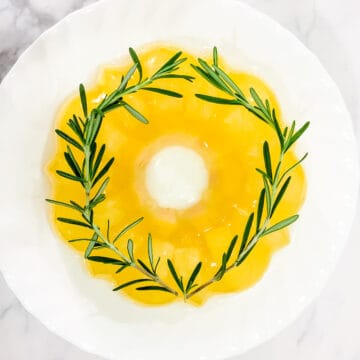
Lychee Jelly
For best results, use the metrics measurements. US customary measurements have not been tested and are only meant for guide.
Ingredients
- 10 g jelly powder (konnyaku jelly)
- 150 g white sugar
- 550 g lychees in syrup (approximate can size)
- 550 g pineapple cubes in syrup (approximate can size)
- Water
- Yellow food coloring (optional)
Instructions
- Prepare the bundt mold by washing and patting it dry. Set it aside.
- Combine the konnyaku powder and granulated sugar in a small bowl. Mix well (see Note 1). Set aside.
- Drain the pineapple cubes. Discard the syrup and set the fruits aside.
- Drain the lychee syrup from the can into a measuring cup. Add water to the syrup until it reaches 950ml (see Note 2). Pour the measured liquid into a medium sized pot.
- Add the sugar-jelly powder into the pot and stir to combine (see Note 3). Turn on the heat to low and cook it until the sugar and jelly is all dissolved. This should take approximately 10 minutes over low heat. Continue to let the jelly cook on medium heat until it reaches a rolling boil (see Note 4). Turn off the heat.
- To assemble the pineapple lychee jelly, begin by arranging a layer of pineapple cubes at the bottom of the tin.
- Spoon a layer of jelly into the bundt tin until the fruits are about two-thirds submerged in the jelly.
- Let the jelly set, for about 3 to 4 minutes. To speed up the setting process, place the bundt tin in a larger tray filled with cold water.
- While waiting for the jelly to set, add some yellow food coloring to the remaining jelly in the pot.
- Once the first layer of the jelly is set, arrange another layer of pineapple cubes on the jelly. This is the final layer of pineapples. At this stage, you will not be using up all the pineapple cubes. You can use the remaining as a garnish or use them for other desserts.
- Gently pour a layer of the yellow jelly until the 2nd layer of pineapple cubes are halfway submerged in the jelly solution.
- Let the jelly set again. Once set, arrange the lychee fruits on it. At this stage, you will not be using up all the lychees in the can. You can reserve the balance for garnish or use them for other desserts.
- Carefully spoon on the remaining jelly into the mold. Transfer the mold into the refrigerator and let the jelly set completely (for about 4 hours) before serving.
- Turn the jelly out onto a serving plate (see Note 5). Add more pineapple cubes and lychees in the center if you wish. Serve the pineapple lychee jelly chill.
Notes
- Mixing the jelly powder with sugar before adding into the water helps avoid the jelly powder from becoming clumpy in the water. Mixing with sugar helps to disperse the powder and there will not be any clumps.
- Refer to the back of your jelly powder packet to determine the amount of liquid to use to make the jelly. If there is none, use 950ml for 10g of jelly powder.
- Before cooking the jelly, mix the sugar and jelly powder in the liquid and stir to combine before turning on the heat. Add the jelly powder into hot water will also lead to the powder clumping.
- Cook the jelly solution until it reaches a rolling boil point to make sure the jelly is completely dissolved. Undercooked jelly will not set well.
- When unmolding, if the jelly does not release from the mold, insert a few toothpicks between the jelly and the mold to create air pockets before turning the jelly over (see how I did it with this fruit jelly cake). The jelly should release easily from the mold.


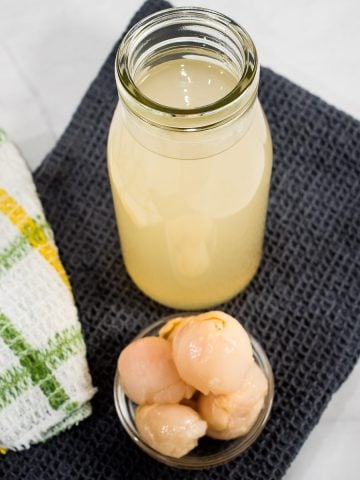
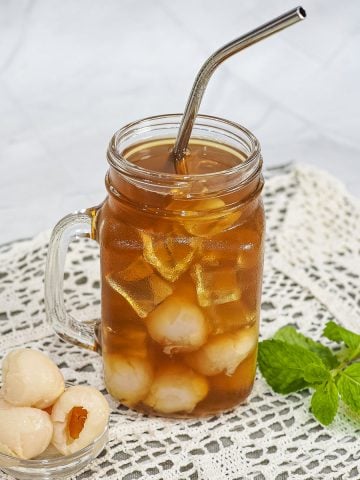
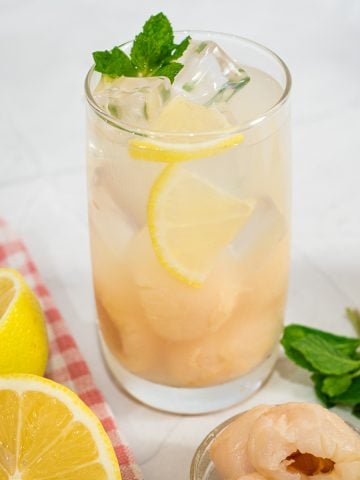
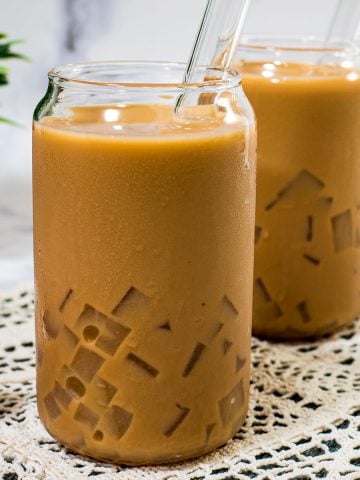
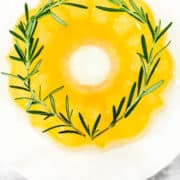
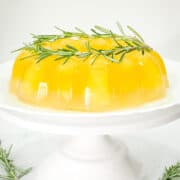

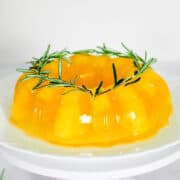
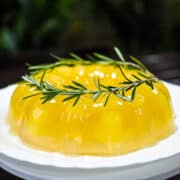
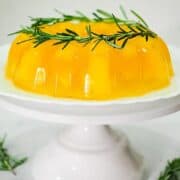
Leave a Reply